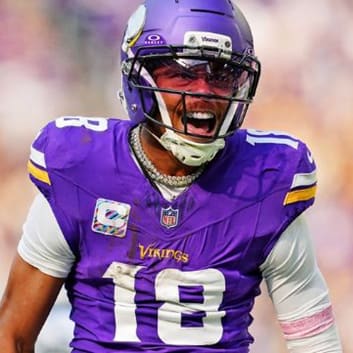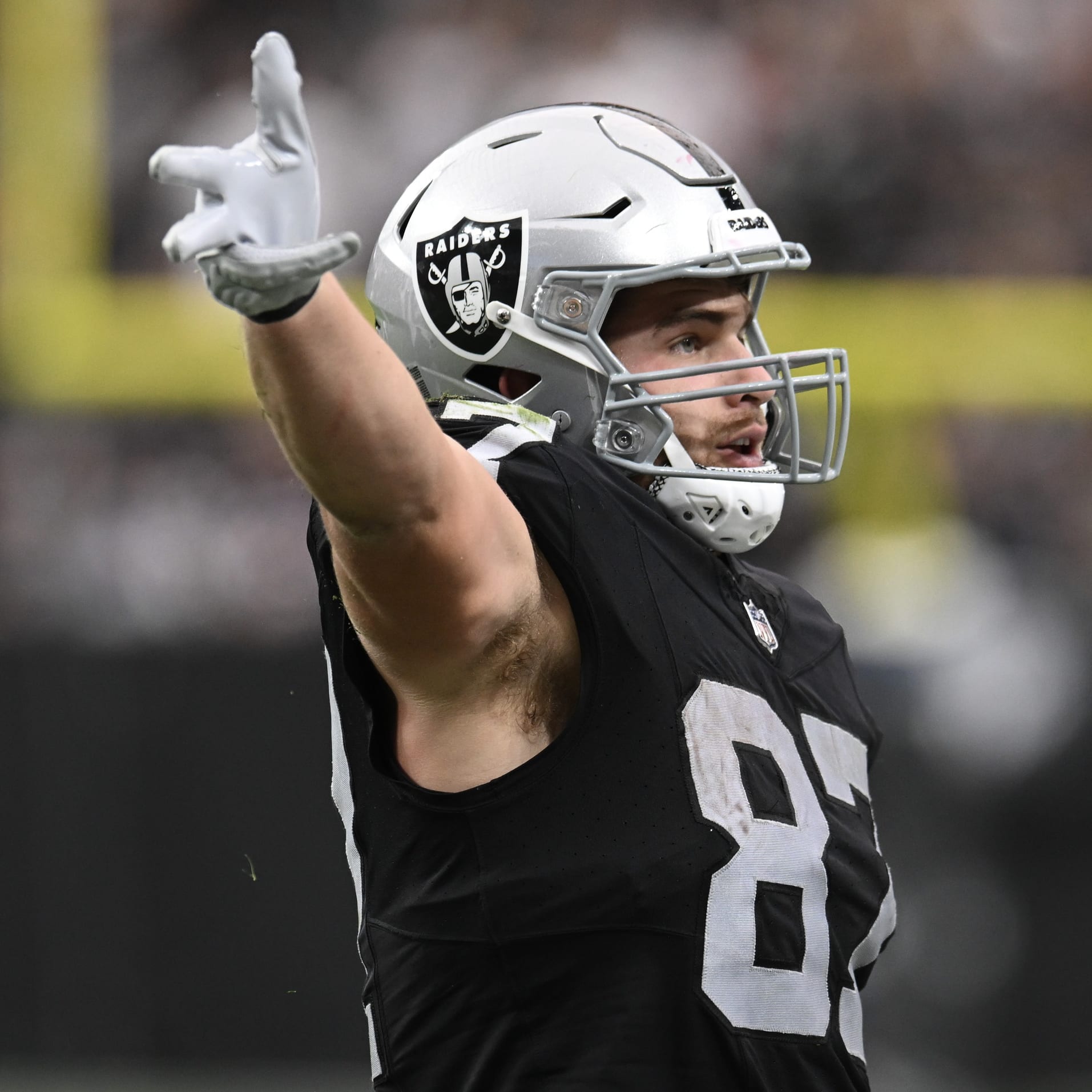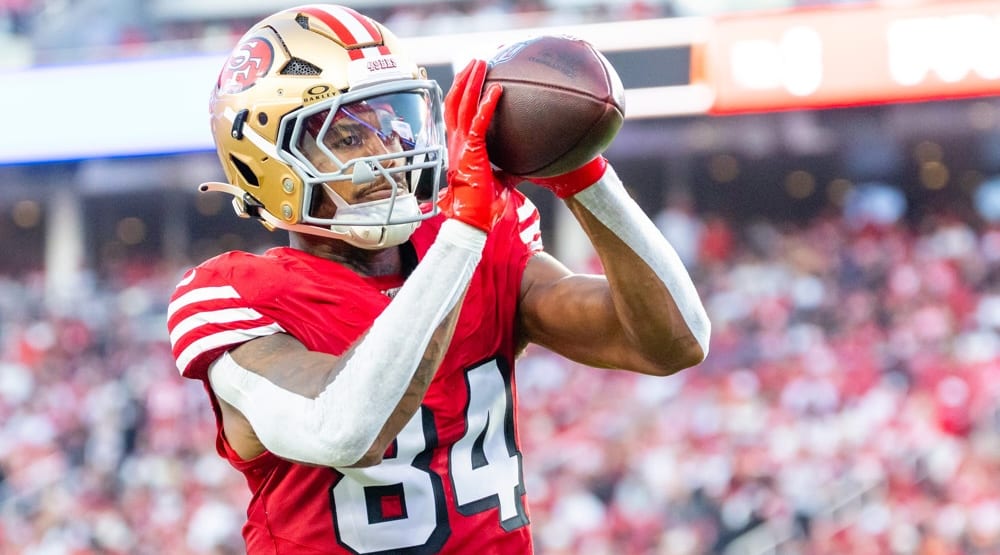Most experienced fantasy managers go into drafts with some type of cheat sheet, but let's face it, even with your order of players listed in advance, we all question similarly ranked players when we're on the clock. The goal of this series is to lay out the upside and downside of players who have similar ADPs. We'll compare players at the same position because that's what fantasy managers typically do when they're targeting a specific pick.
Fantasy GMs looking for a running back after the consensus top 12 are off the board might feel the need to get a strong option before the pool of obvious candidates dries up, so in this ADP battle, we'll look at Clyde Edwards-Helaire, D'Andre Swift and J.K. Dobbins, who typically go between picks 23 and 32 in drafts.
Clyde Edwards-Helaire
Upside: The buzz that surrounded Clyde Edwards-Helaire in preseason last year made it feel as if he was a bust last year even though he posted a respectable 1,100 combined yards with five touchdowns in just 13 games as a rookie. However, he comes at a discounted price this year, and there's a very real chance he posts excellent production. In five of his first six games last year, he posted at least 80 combined yards while also catching 21 passes between Weeks 2 and 6, but his season started to go downhill after his strong start. One of the reasons he could see increased production this season is that the Chiefs were very active in rebuilding their offensive line in free agency and the draft, and a number of the blockers they added are very good at gap blocking, which seems to be a strong fit for Edwards-Helaire's skill set. Another reason is that coach Andy Reid has always been excellent at making adjustments to put his best players in optimal positions to succeed, and knowing the Chiefs will see among the lightest box counts in the league, Reid will likely do a better job getting his top RB to the second level of the defense on quick-hitting runs. Although he's unlikely to challenge for the title of top fantasy RB, he easily could finish as high as top six.
Downside: In just three of 14 games of his rookie season (including playoffs), he was able to reach 70 rushing yards, and as a receiver, he topped 23 yards just once in his last 10 games (including playoffs). Although the offensive line is expected to be much improved this season, he rarely showed the ability to post dominant numbers despite facing defenses that were rarely concerned with slowing him down, and there's no guarantee the offensive line will directly lead to improvement for the running back. And even though his 2020 teammates Darrel Williams and Le'Veon Bell were not very good last year, that duo accounted for seven fewer snaps than Edwards-Helaire had, so although the depth chart of Williams and Jerick McKinnon doesn't look formidable, the fact that Reid gave that many touches to lesser backs last year can't be completely discounted. Although Edwards-Helaire should have little trouble being a top-24 RB, lack of work could keep him from posting excellent numbers.
D'Andre Swift
Upside: Although D'Andre Swift had just 114 carries in 13 games as a rookie, he posted a solid 4.6 yards per carry, and in the four games in which he was given 13-16 carries, he averaged 82 yards and one rushing score along with four receptions and 31 receiving yards with an additional score. So even if he doesn't get elite usage, he showed in those limited opportunities that he can perform as an RB1 when given a reasonable workload. He also caught an impressive 46 of 57 targets, proving he's a reliable receiver while posting 7.8 yards per reception, and playing on a Detroit team that's expected to trail often this year, Jared Goff could frequently look to dump off passes to his explosive back. Overall, his upside could be in the RB10 range, especially in PPR leagues.
Downside: Despite having an aging Adrian Peterson in the backfield last year, the Lions' coaching staff only gave Swift just about nine carries per game, and throughout the offseason and training camp, the new coaching staff has consistently talked up free-agent acquisition Jamaal Williams as a co-No.1 running back with Swift. If this turns into a full timeshare, and if Williams is considered both an excellent pass blocker and dependable receiver, the Lions might decide he's at least as valuable on passing downs, taking targets, in addition to carries, from Swift. With the Detroit offense expected to be one of the weaker units in the league, there also may not be many red-zone opportunities, potentially taking away scoring opportunities. Swift's downside has little to do with talent, it would have more to do with the coaching staff and how they divvy up the workload.
J.K. Dobbins
Upside: Although J.K. Dobbins was targeted just 24 times last year he had a stretch in Weeks 3-6 when he averaged 3.25 targets per game, and in the divisional round playoff loss to the Bills, he was targeted five times, so there's the possibility that he sees an increase in targets this year. In addition, from Week 13 on, he averaged 11 carries per game, which was the same number Gus Edwards saw, but if he could grab at least 60 percent of the carries, he could add production, especially if he continues to rush for the elite 6.0 yards per carry of last year. Finally, he'll need to continue to extend at least some of the touchdown production that had him finding the end zone eight times in his last eight games (including playoffs). Overall, Dobbins seems to be an elite talent, but he'll need an increase in workload/opportunity to reach the upside that could potentially make him a top-10 RB.
Downside: It was unfortunate down the stretch last year that Dobbins was targeted just twice in the Ravens' last five games of the season, catching just one pass for 17 yards, and if he continues to be absent in the passing game, that will keep him from reaching his potential. In addition, if he continues to see just 11 carries per game, as he did between Weeks 13 and the divisional round of the playoffs, it simply won't be enough work to give him legitimate weekly upside, though his excellent ability will at least give him a solid floor. Finally, if he can't repeat the touchdown consistency he showed by scoring in almost every game in the second half of the season, his fantasy value may consist of just rushing yards, and he only surpassed 80 yards on the ground twice all season.
Bottom Line
Even though it didn't work out as well as many hoped last year, Edwards-Helaire should benefit from a much-improved offensive line, some improved scoring luck on carries inside the five-yard line, as well as Andy Reid's ability to use play design to unlock Edwards-Helaire's upside. In addition, he'll consistently face the fewest defenders in the box of this trio, and he could easily push his backfield competition into the shadows. Overall, this situation makes him the biggest upside play of this trio.
Despite appearing to be the most talented runner in this group, it's concerning that Dobbins not only has to share work with Gus Edwards, but also Lamar Jackson. That said, the Ravens have an amazing running scheme with a strong offensive line, so it wouldn't be a surprise if Dobbins continued to run for an incredibly high yards per carry, making him the safest floor player of this group, though the upside is lacking.
Although Swift may be a very dynamic back, he figures to play for a Lions team that will not only trail often, but they may also be one of the lower-scoring teams in the league. As a result, Jamaal Williams likely will be needed in pass protection at the expense of Swift being a full-time receiving back, making him a volatile fantasy option who could have too many weeks of low production. However, fantasy managers who believe he'll be heavily used in the passing game while seeing double-digit touches might feel compelled to declare him as having a better floor than Dobbins.






































